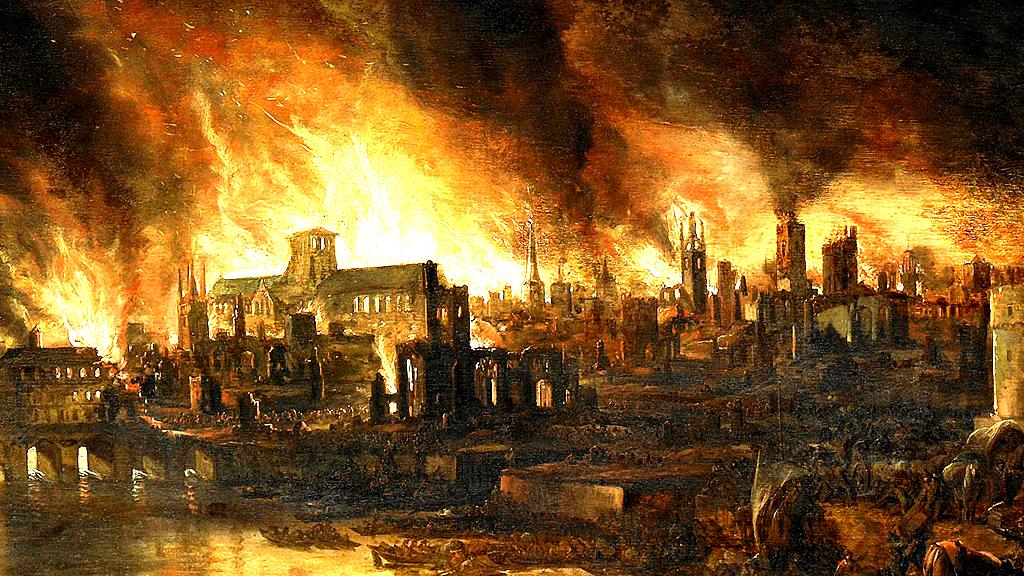Great Fire of London: Man who first raised alarm identified
- Published
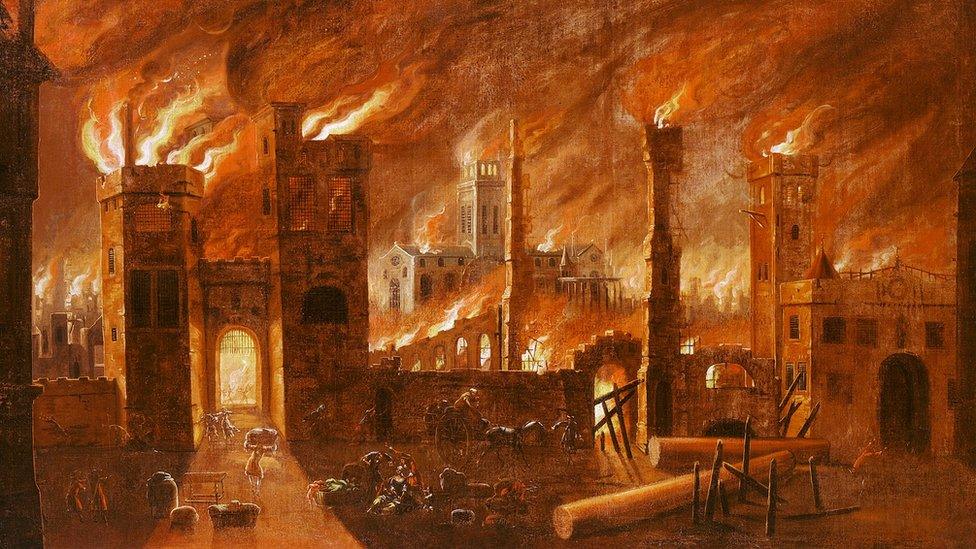
The fire began in Thomas Farriner's in the early hours of 2 September 1666
The person who is thought to have first raised the alarm about a blaze at a bakery that became the Great Fire of London has been identified.
The fire, which began in Thomas Farriner's property in Pudding Lane on 2 September 1666, lasted for four days and destroyed much of the capital.
New research has found it was Farriner's "man" Thomas Dagger who is believed to have initially spotted it.
Prof Kate Loveman said Dagger's role had "gone unrecognised" until now.
Starting in the early hours of the morning when there was a strong wind, the bakery blaze quickly spread between tightly-packed houses, which had been built from wood and thatch and had dried out over a warm summer.

By the time it was extinguished, an area about a mile-and-a-half (2.4km) wide along the River Thames was devastated, with 13,200 houses, 87 churches and the old St Paul's Cathedral destroyed.
The huge fire left some 100,000 people homeless but led to widespread changes in the city, many of which still have an impact today.
While Thomas Farriner's bakery is well-known for its part in the event, it is not known what caused the initial blaze, while little had previously been found out about who first witnessed it.
Prof Loveman, from the University of Leicester, used letters, pamphlets and legal and guild records to discover Thomas Dagger's identity.
One note from MP Sir Edward Harley stated that Farriner's "man" (meaning his servant or journeyman) had woken after 01:00 "with the choke of the smoke", and that Farriner, his daughter and Dagger had then escaped out of an upper window. Other sources also suggested Farriner's son was present.
The names of those members of the household - including Farriner's adult children Hanna and Thomas - were then found in other records with journeyman baker Dagger being among those. Documents also reported him to be the person who raised the alarm.
Prof Loveman said that while the Farriners were well-known by historians, "Thomas Dagger's role has gone unrecognised", and his name "didn't become associated with the fire at the time".
"Soon after the disaster, he merges back into the usual records of Restoration life, having children and setting up his own bakery," she added.
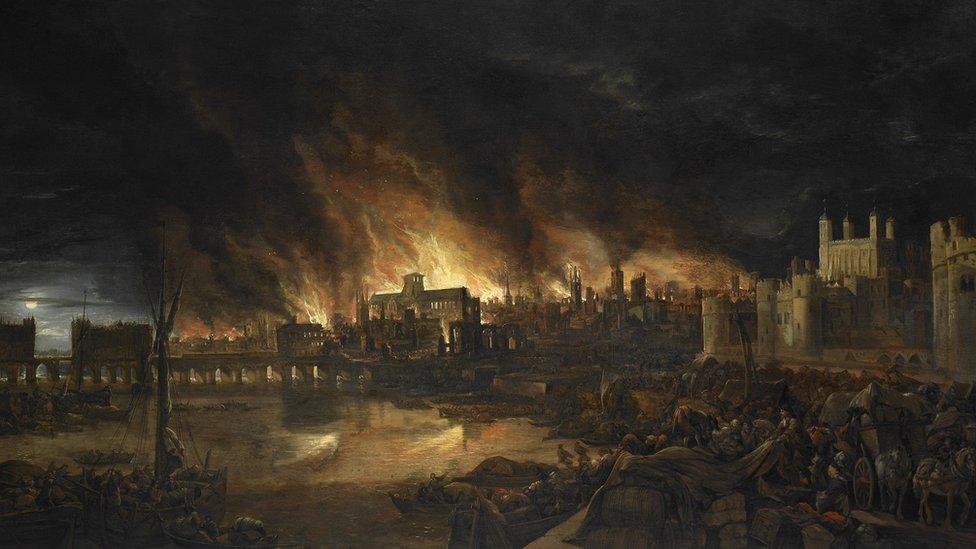
While the fire destroyed the city, only a few people are thought to have died in the blaze
The research was carried out for the Museum of London as part of a reimagined Great Fire display, which will go on show when the venue's new Smithfield site opens in 2026.
Meriel Jeater, lead curator for the displays, said the discovery would "feed into the exciting new ways in which we'll be telling the story of the Great Fire of London".
The research was funded by the museum's Reimagining the Restoration project, which has developed new teaching resources about the Great Fire that are available on the museum's website.

How the Great Fire changed London

Building regulations introduced after the blaze banned the use of wood "to erect any house or building, whether great or small"
Christopher Wren's St Paul's Cathedral, now one of the capital's most iconic buildings, was created to replace the medieval cathedral destroyed in the blaze
While the city's layout remained mostly similar, new architecture was brought to the city with Wren overseeing the rebuilding of 52 churches, 36 company halls, and the memorial to the Great Fire, Monument
The fire is considered by many to have led to the creation of the modern insurance industry, with the first insurance company, called the Fire Office, being set up in 1667
New rules were brought in to ensure every parish always had various fire equipment available due to the lack of a fire brigade at the time of the blaze
Find out more about the impact of the blaze here.

Follow BBC London on Facebook, external, Twitter , externaland Instagram, external. Send your story ideas to hellobbclondon@bbc.co.uk, external
Related topics
- Published4 September 2016
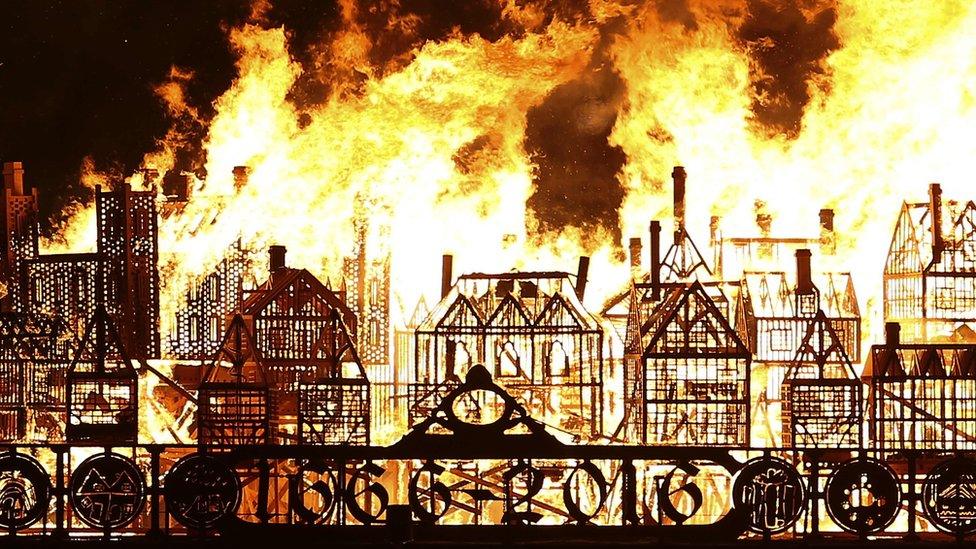
- Published23 July 2016
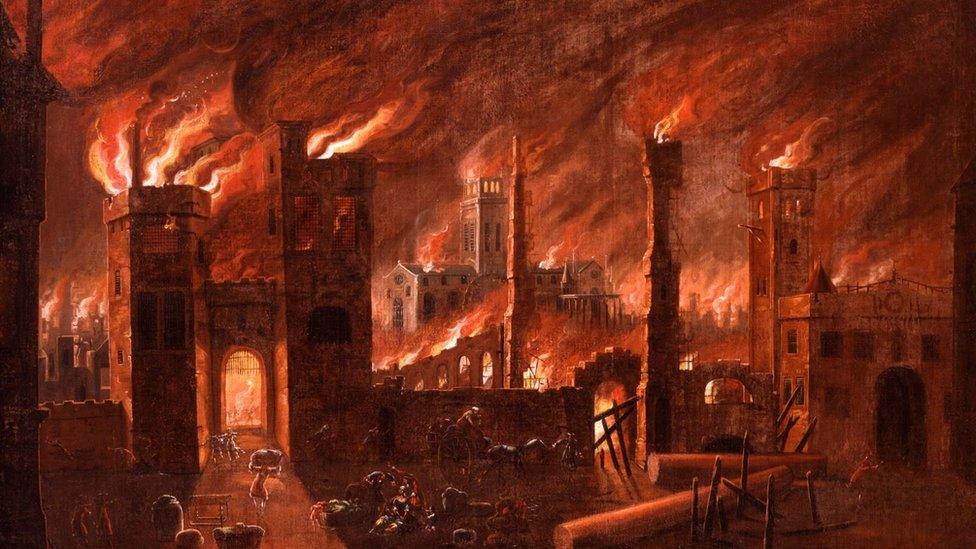
- Published3 February 2016
